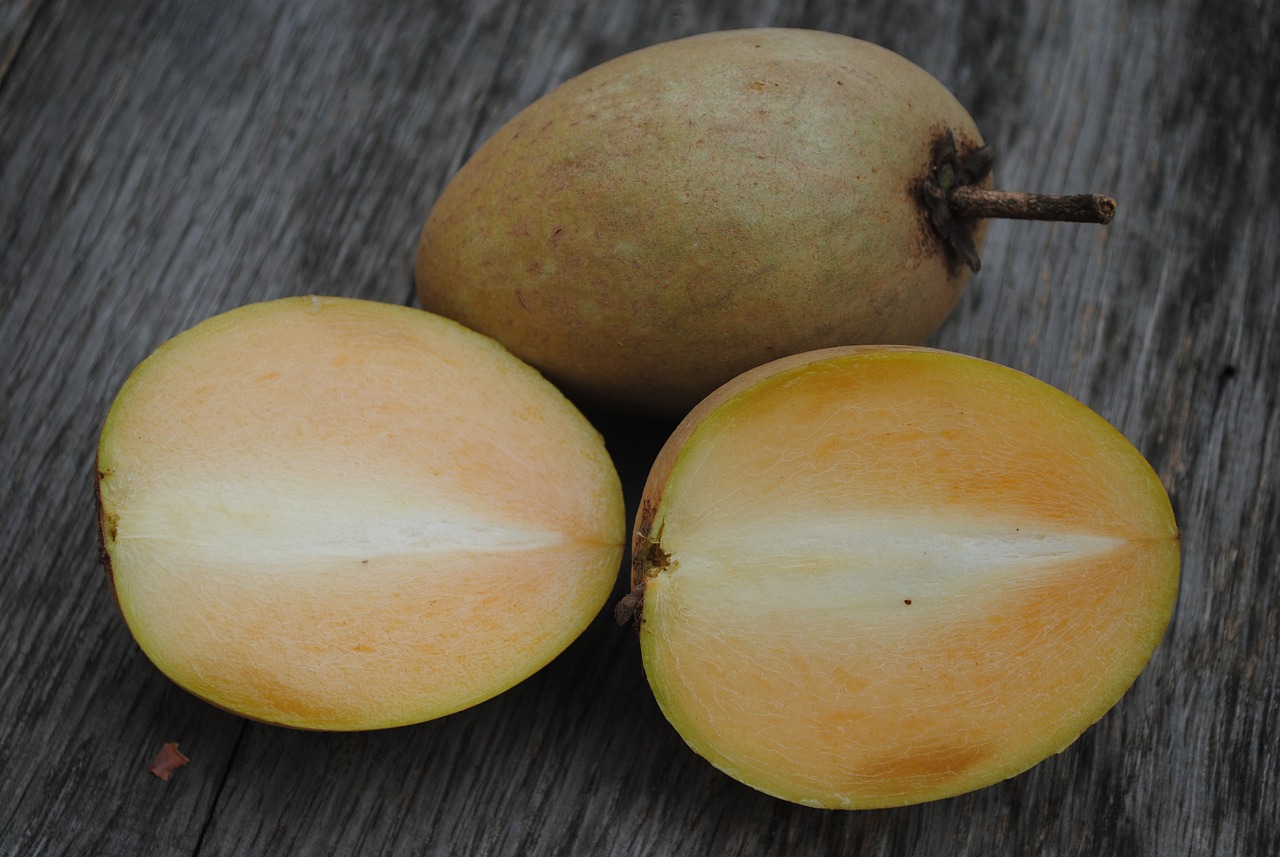Discover the Sweet World of Sapodilla (Chikoo)
Introduction
Sapodilla, known as Chikoo in India, is a delightful tropical fruit that is cherished for its sweet flavor and numerous health benefits. Originating in Central America, this fruit has found its way into various cuisines around the world, particularly in India and Southeast Asia. Today, we’ll dive deep into the intriguing world of sapodilla, exploring its origins, varieties, health benefits, cultivation, and much more.
Fruit Facts
Do You Know?
- Sapodilla belongs to the family Sapotaceae and is scientifically known as Manilkara zapota.
- This fruit is believed to have originated in the rainforests of Central America, particularly in Mexico and Belize.
- The sapodilla tree is evergreen, capable of growing up to 30 meters in height, and is known for its longevity.
Health Benefits
- Rich in Nutrients: Sapodilla is a powerhouse of essential nutrients, including vitamins A, C, and E, as well as dietary fiber and minerals like potassium and iron.
- Boosts Immunity: The high Vitamin C content helps strengthen the immune system and protect against infections.
- Promotes Digestion: Sapodilla is an excellent source of dietary fiber, which aids digestion and prevents constipation.
- Antioxidant Properties: The fruit is rich in antioxidants like polyphenols and flavonoids, which help fight free radicals and reduce the risk of chronic diseases.
- Supports Heart Health: The potassium content in sapodilla helps regulate blood pressure and improve cardiovascular health.
- Aids in Weight Management: Sapodilla is low in fat and calories but high in fiber, making it an ideal fruit for weight management.
Varieties of Sapodilla
Sapodilla comes in various varieties, each with its unique flavor and characteristics. Here are some notable ones:
India
- Kalipatti: One of the most popular varieties in India, Kalipatti sapodillas are known for their exceptionally sweet taste and smooth texture. They are primarily grown in the coastal regions of Maharashtra.
- Pala: This variety is larger in size and has a slightly granular texture. It is commonly grown in Gujarat and parts of Tamil Nadu.
- Cricket Ball: Named for its size and shape, the Cricket Ball variety is round and larger than most other sapodillas. It is grown in various regions, including Karnataka and Andhra Pradesh.
Around the World
- Prolific: A popular variety in the Philippines, Prolific sapodillas are known for their abundant fruit production and sweet flavor.
- Tikal: Originating from Mexico, Tikal sapodillas are medium-sized with a rich, sweet taste and a smooth texture.
- Hasya: This variety, grown in the United States, particularly in Florida, is known for its large size and exceptionally sweet flavor.
Cultivation of Sapodilla
Growing Conditions
- Soil Requirements: Sapodilla trees thrive in well drained soils with a pH level between 6.0 and 8.0. Sandy loam soils are ideal for sapodilla cultivation.
- Climate: Sapodilla trees prefer tropical and subtropical climates with temperatures ranging from 10°C to 35°C. They can tolerate drought but thrive best with regular watering.
- Planting: Sapodillas can be propagated from seeds, grafting, or air-layering. Seeds should be sown in well-prepared seedbeds or containers. Transplant seedlings when they are about 20-30 cm tall.
Care and Maintenance
- Watering: Regular watering is essential, especially during dry periods. Overwatering should be avoided to prevent root rot.
- Fertilization: Apply organic compost or well-rotted manure to enrich the soil. Fertilize sapodilla trees with a balanced fertilizer every three to four months.
- Pruning: Prune sapodilla trees to remove dead or diseased branches and shape the tree. This encourages better air circulation and sunlight penetration.
Harvesting
- Maturity: Sapodilla fruits take about 4 to 6 months to mature after flowering. They are usually harvested when they are fully mature but still firm.
- Ripening: After harvesting, sapodillas are allowed to ripen at room temperature. Ripe fruits are soft to the touch and emit a sweet fragrance.
Where to Find Sapodilla
Local Availability In New Zealand, fresh sapodillas are typically available from local fruit markets and specialty stores that stock tropical fruits. They are usually available during the summer months, from December to March. The Cricket Ball variety is commonly found in markets.
Imported Options For those looking to enjoy sapodillas year round, specialty Asian and Indian grocery stores often carry imported varieties. You can also find frozen sapodilla pulp in some supermarkets, making it easy to enjoy this delicious fruit even when it’s not in season.
Usage Tips
How to Select: When choosing sapodillas, look for fruits that are slightly soft to the touch but not mushy. A ripe sapodilla will emit a sweet fragrance, particularly near the stem. Avoid fruits with blemishes or dark spots.
Storage Tips: Store unripe sapodillas at room temperature until they ripen. Once ripe, they can be stored in the refrigerator for up to a week. To prolong their shelf life, you can also freeze sapodilla slices or puree for future use.
Recipes & Uses
- Sapodilla Smoothie: Blend fresh or frozen sapodilla chunks with yogurt, a splash of milk, and a handful of ice for a refreshing and nutritious smoothie.
- Sapodilla Ice Cream: Puree sapodilla pulp and mix it with cream, sugar, and a splash of vanilla extract. Freeze

